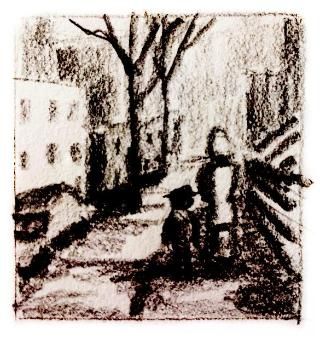Asher Lev Discussion Guide: Part 2

Chapters 3 through 5
Dr. David McNutt (Core Studies)
In these chapters, we see the ongoing consequences and increasing tension within Asher’s family and community as he pursues his artistic interest.
- Asher is often attracted to—and sometimes overwhelmed by—the visual. But he finds himself moved by the words of prayers during a worship service (90). How do you view the relationship between word and image in our experience of and understanding of God?
- When Stalin dies, Asher draws a picture of him in a coffin without knowing what he is doing (100). Later, during a lesson on holiness, he desecrates a Chumash by unintentionally drawing the face of the Rebbe (123). Plato thought that poets and artists can make art only by being overcome or possessed by the divine. Would you agree? How does that compare to being inspired by the Holy Spirit?
- Asher repeatedly dreams about his mythic ancestor (98, 128). How has Asher been shaped by his family—even in ways unknown to him, by people he has never met? How have we?
- One of the themes of the novel is the notion of “incomplete” work (118). What would it mean for Asher’s father to stop working for the Rebbe, for his mother to leave her brother’s work unfinished, or for Asher to stop drawing?
- As he expresses his artistic gift, Asher finds that he is causing suffering—both for others and for himself: his parents worry about him (107, 139); kids at school tease him (142); he steals oil paints and paintbrushes (142, 148). What is the right balance between individual expression and communal responsibility?
- Asher’s parents make incredible sacrifices in order to carry on the Rebbe’s work, including their heartbreaking decision to send Aryeh to Europe by himself, leaving Rivkeh and Asher in America. Does Asher make similar sacrifices? Or is his gift revealing (or causing) selfishness?
